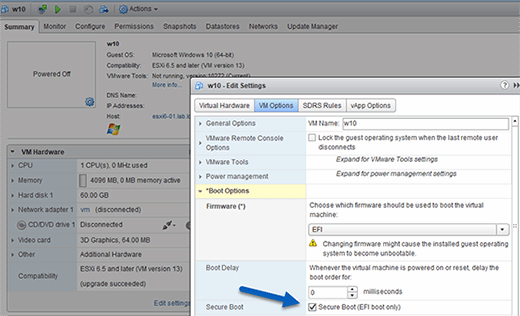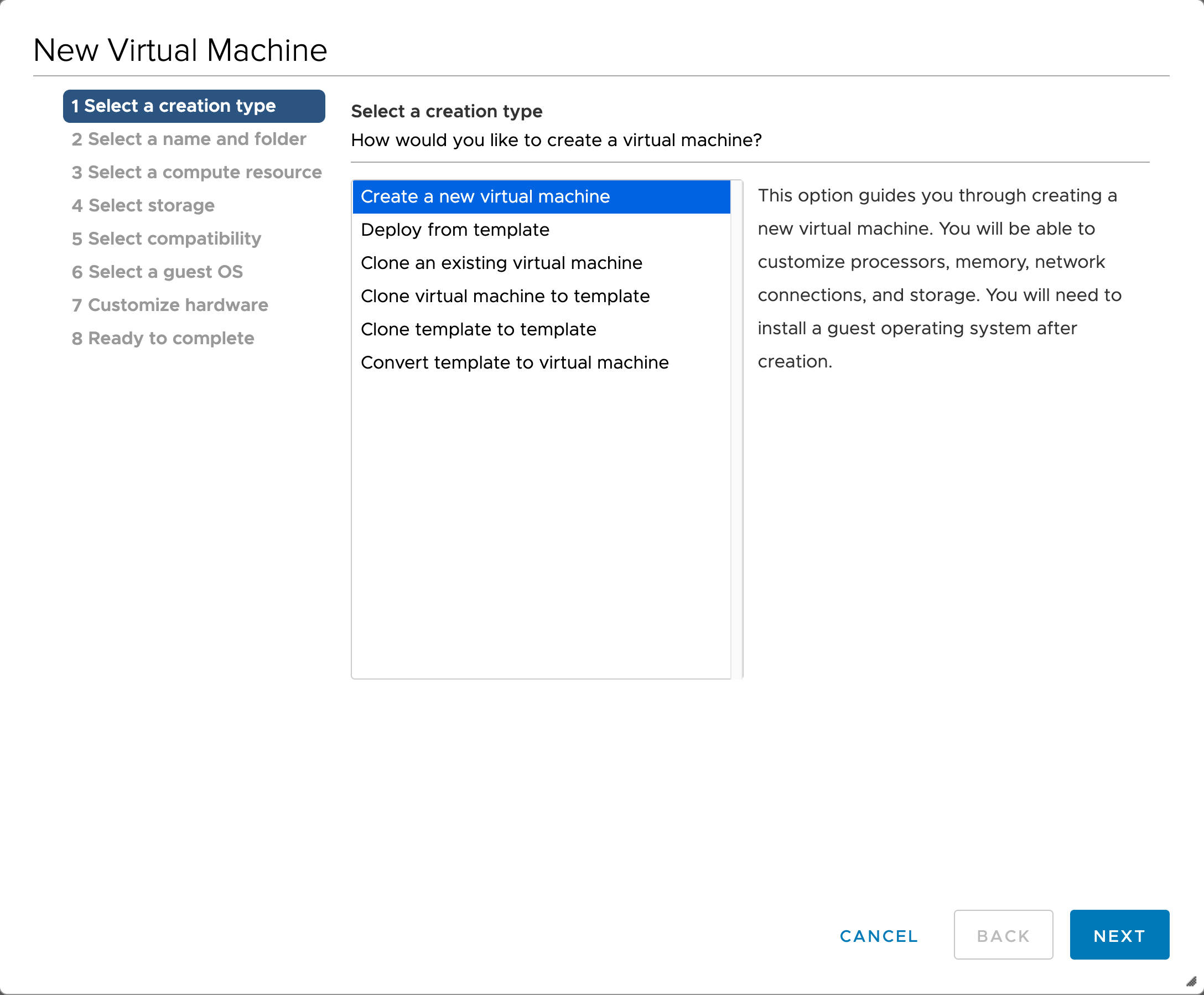
- #Install debian onto vm esxi 6.5 form the network how to
- #Install debian onto vm esxi 6.5 form the network software
- #Install debian onto vm esxi 6.5 form the network password
- #Install debian onto vm esxi 6.5 form the network license
- #Install debian onto vm esxi 6.5 form the network iso
This is a good safety measure for when you have public facing servers, or, even for internally exposed servers on your corporate network.

After a number of failed login attempts, the server will trigger a lockout. In ESXi 6.0 and above a security lockout feature was implemented on the root user for safety. This will need to be done manually by a user with an existing SSH key or via the SOS Console. Your SSH key will work for the lifespan of the system, but be aware that injection process is one-time, so adding an SSH key via the portal or API will not add it to the host for the root account. In addition, any SSH keys you have associated with your project will be placed on the server during install.
#Install debian onto vm esxi 6.5 form the network password
ESXi WebUI Accessīy default our ESXi image injects a root password (which can be used for the ESXi Web Interface and the SOS Console login prompt) and this is visible in the portal for the first 24hrs after the server is deployed.Īfter the first 24hrs, the root password will no longer be visible for security reasons, so please make a note of it or change it to one you know. Attempting to add the second vnic to vSwitch0 will result in you being unable to access the server or VMs by any means other than the SOS Console. Trunking of uplinks is not supported, as Equinix Metal’s network only support LACP for link aggregation and ESXi does not support that requirement.
#Install debian onto vm esxi 6.5 form the network software
This is due to limitations of the underlying block storage system and compatibility issues with the ESXi Software iSCSI Adapter.įor networking configurations, only one vnic per Standard vSwitch is supported. Running ESXi connected to a vCenter is not supported by Equinix Metal, but you can contact VMware directly for support with that configuration.Įquinix Metal Block Storage is not supported with ESXi. Feature LimitationsĮquinix Metal only supports ESXi in a stand-alone configuration.

#Install debian onto vm esxi 6.5 form the network license
If you would like to utilize it beyond the 60-days you will need to acquire a license from VMware and activate it on your Equinix Metal machine(s) directly. By default, the OS comes with a 60-day evaluation license. With VMware ESXi, you can easily partition your server into virtual machines.Įquinix Metal does not offer licensing for ESXi at this time. Redundancy, High-Availability, and Load BalancingĮquinix Metal supports ESXi 6.5 as installable operating systems for most x86 based bare metal server configurations. vmx file, and set bios.forceSetupOnce to "TRUE" manually again.Configuring Dedicated Ports for Equinix Fabric If you want to re-enter the BIOS setting, you will have to edit. So the next time you power on the VM, it will not re-enter the BIOS setting. Note that bios.forceSetupOnce will automatically be reset to "FALSE" in. This will force the guest VM to automatically enter the BIOS settings upon power-on. Method TwoĪlternatively, you can add the following entry in the *.vmx file of the guest VM. With additional boot delay, you will have more time before booting, during which you can press key to enter the BIOS setup menu. The maximum allowable boot delay is 10000 milliseconds or 10 seconds. So if you want to delay POST screen by 5 seconds, it should be: bios.bootDelay = "5000". Note that the unit of numbers is milliseconds.

If you cannot press button quickly enough to enter BIOS settings, add the following entry to the *.vmx file of the guest VM.
#Install debian onto vm esxi 6.5 form the network iso
Upon exit, the guest VM will boot from the ISO image loaded on CD-ROM drive. Save the change, and exit the BIOS settings. Press and keys to move CD-ROM drive up on top. Go to Boot tab, and press key to highlight CD-ROM drive. That will lead you to the guest VM's BIOS settings as shown below. Right after the VM is powered on, and before power-on self test (POST) starts, click into the VM's console screen, and then press button. There are several ways to change the boot sequence of a guest VM on VMware Player. Open up the virtual machine settings of a VM, and edit the CD/DVD setting to connect to the ISO image that you want to boot from.

The first step is to edit the CD/DVD setting of a VM.
#Install debian onto vm esxi 6.5 form the network how to
In this article, I will describe how to change the boot sequence of a guest VM on VMware Player.Īs a demonstration, I will set up a guest VM to boot from an ISO image, which requires booting from CD/DVD. If you want to boot a VM from an ISO image instead, you need to change the boot sequence of the VM, so that it starts with CD-ROM drive. When you run a virtual machine (VM) on VMware Player, the default boot sequence of the VM is removable devices → hard drive → CD-ROM drive. How to change the boot order of guest VM on VMware Player


 0 kommentar(er)
0 kommentar(er)
